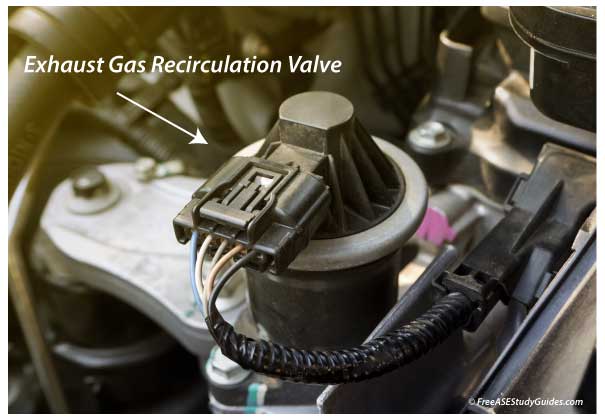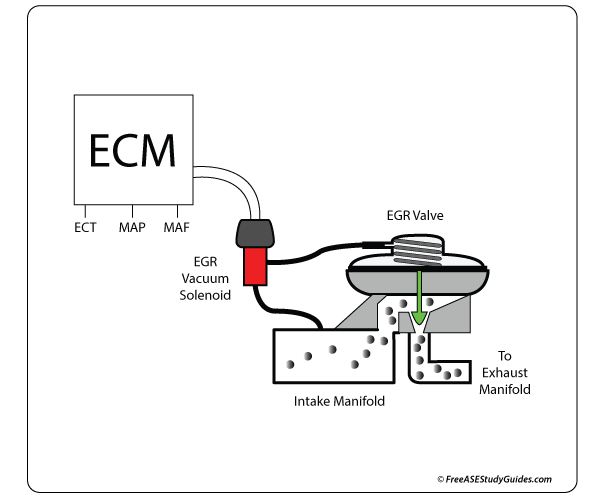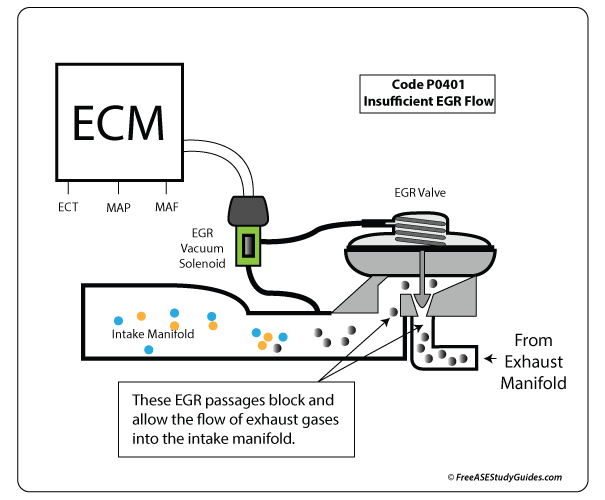Exhaust Gas Recirculation Valve

The EGR system includes the EGR valve, tubing, and passages between the exhaust and intake ports. The ECM controls the valve according to input from various sensors. Its primary function is to reduce the amount of the harmful gas NOx or Nitrogen Oxides created in the combustion chamber. This gas forms when nitrogen and oxygen bond at high cylinder temperatures. The EGR valve reduces the amount of NOx produced by recirculating a regulated amount of inert gas (exhaust) into the intake manifold. This inert exhaust gas reduces cylinder temperature and the amount of NOx produced in the combustion chamber.

A vacuum-operated EGR valve is illustrated. The valve is vacuum-controlled by a duty cycle solenoid and closed by a spring. It opens in proportion to the throttle opening. This valve prevents the engine's cylinders from reaching damaging temperatures and protects the environment from NOx.
Clogged EGR Passage

If insufficient flow is detected, the ECM will set code P0401. The passages in these systems can become clogged, blocking the flow and resulting in insufficient EGR flow, detonation, and high NOx emissions. If the solenoid, circuits, and EGR valve are good, and the passage is clogged, cleaning the passages with a wire brush will normalize the system. Always check the manufacturer's specifications for special procedures.
The symptoms of a stuck open EGR valve are stalling, surging, and a rough idle. This stumble is noticeable. A stuck closed or restricted EGR valve results in high cylinder temperatures, detonation, and ping.